Sawhorses are an essential tool for any DIY enthusiast or professional craftsperson. These versatile workhorses provide sturdy support for a wide range of projects, from sawing lumber to painting doors. Whether you’re a seasoned woodworker or just starting your DIY journey, choosing between buying or building a sawhorse can be a difficult decision. This guide has the pros and cons of each option so you can make an informed choice based on your needs and skill level.
Understanding the Importance of Sawhorses in DIY Projects
Sawhorses are indispensable in any workshop or construction site. These simple yet effective tools serve as portable workstations, providing a stable platform for cutting, assembling, and finishing various materials. Their versatility extends beyond woodworking, making them useful for tasks such as painting, drywall installation, and even as temporary scaffolding.
The beauty of sawhorses lies in their ability to transform any space into a functional work area. Whether you’re working in a garage, on a patio, or at a job site, a pair of sawhorses can quickly set up a workspace tailored to your project’s needs. Their importance in DIY projects cannot be overstated, as they contribute significantly to work efficiency, safety, and the overall quality of your finished products.
Types of Sawhorses
Sawhorses come in various designs and materials, each with its own set of advantages.
Classic Wooden Sawhorses
Wooden sawhorses are the traditional choice and remain popular among DIY enthusiasts and professionals alike. These sawhorses are typically made from sturdy lumber such as pine or oak and feature a simple A-frame design. Wooden sawhorses can be heavier than their metal or plastic counterparts, which may affect portability, but the classic wooden sawhorse offers many benefits:
- Cost-effective: Building your own wooden sawhorses can be an economical option.
- Customizable: You can easily modify wooden sawhorses to suit your specific needs.
- Durable: When properly constructed and maintained, wooden sawhorses can last for years.
Metal Folding Sawhorses
Metal folding sawhorses are a popular choice for those who prioritize portability and storage. These sawhorses are typically made from steel or aluminum and feature a collapsible design. Metal sawhorses may not be as easily customizable as wooden and they may be more expensive. However, metal sawhorses also have quite a few benefits:
- Compact storage: Folding design allows for easy storage in tight spaces.
- Durability: Metal construction offers excellent strength and longevity.
- Lightweight: Ideal for transporting to different job sites.
Plastic Sawhorses
Plastic sawhorses are gaining popularity due to their lightweight nature and affordability. These sawhorses are often made from high-density polyethylene or similar materials. Plastic sawhorses may not be as strong as their wooden or metal counterparts and may not be suitable for heavy-duty tasks, but they also offer a lot of upsides:
- Extremely lightweight: Easy to move and transport.
- Low maintenance: No need for painting or sealing.
- Weather-resistant: Ideal for outdoor use.
How To Choose a Sawhorse
Selecting the right sawhorses involves considering several factors that will impact their functionality and suitability for your projects. Here are the key aspects to keep in mind:
Weight Capacity
One of the most critical factors to consider is the weight capacity of the sawhorses. This determines the maximum load they can safely support. Consider the following:
- Light-duty sawhorses typically support 100–300 pounds per pair.
- Medium-duty sawhorses can handle 500–1000 pounds per pair.
- Heavy-duty sawhorses are designed to support 1000 pounds or more per pair.
For safety and stability, choose sawhorses with a weight capacity that exceeds your heaviest anticipated workload.
Portability
If you frequently work on different job sites or need to move your sawhorses around, consider the portability of your sawhorse based on these factors:
- Folding or collapsible designs for easy transport
- Presence of handles or carrying features
- Weight of the sawhorses themselves
Lightweight, folding sawhorses are ideal for those who need to transport their equipment regularly.
Storage Space
Available storage space in your workshop or garage can influence your choice of sawhorses. Consider the following:
- Ability to hang on walls or store vertically
- Folding or stackable designs for compact storage
- Size of the sawhorses when not in use
If space is at a premium, opt for sawhorses that can be easily folded or disassembled for storage.
Durability
The longevity of your sawhorses depends on their durability. Investing in durable sawhorses can save you money and hassle in the long run, especially if you use them frequently or for heavy-duty tasks.
- Construction methods (e.g., reinforced joints, welded connections)
- Material quality (e.g., hardwood vs. softwood, gauge of metal)
- Resistance to weather and environmental factors
DIY Sawhorse Options
Building your own sawhorses is a great way to flex your DIY muscles and create a sawhorse that perfectly fits your space and needs. Here are some popular DIY sawhorse options:
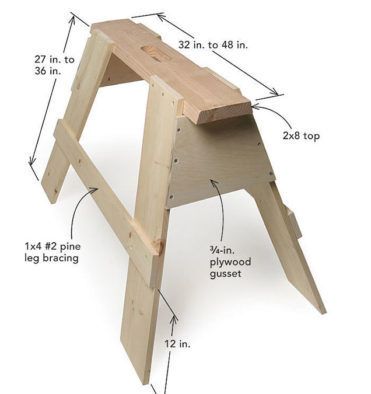
Building Classic Wooden Sawhorses
Classic wooden sawhorses are relatively simple to build and can be customized to your desired height and width. Here’s a basic overview of the process:
- Cut the legs, top beam, and cross braces from 2×4 lumber.
- Assemble the A-frame legs using wood screws or bolts.
- Attach the top beam to the legs.
- Add cross braces for additional stability.

Creating Stackable Sawhorses
Stackable sawhorses are an excellent option for those with limited storage space. Stackable sawhorses combine the benefits of sturdy construction with space-saving design, making them ideal for smaller workshops. This design typically includes the following features:
- Creating a slightly tapered leg design.
- Using a top beam that allows the legs to nest inside when stacked.
- Adding reinforcing cross braces that don’t interfere with stacking.
Brackets
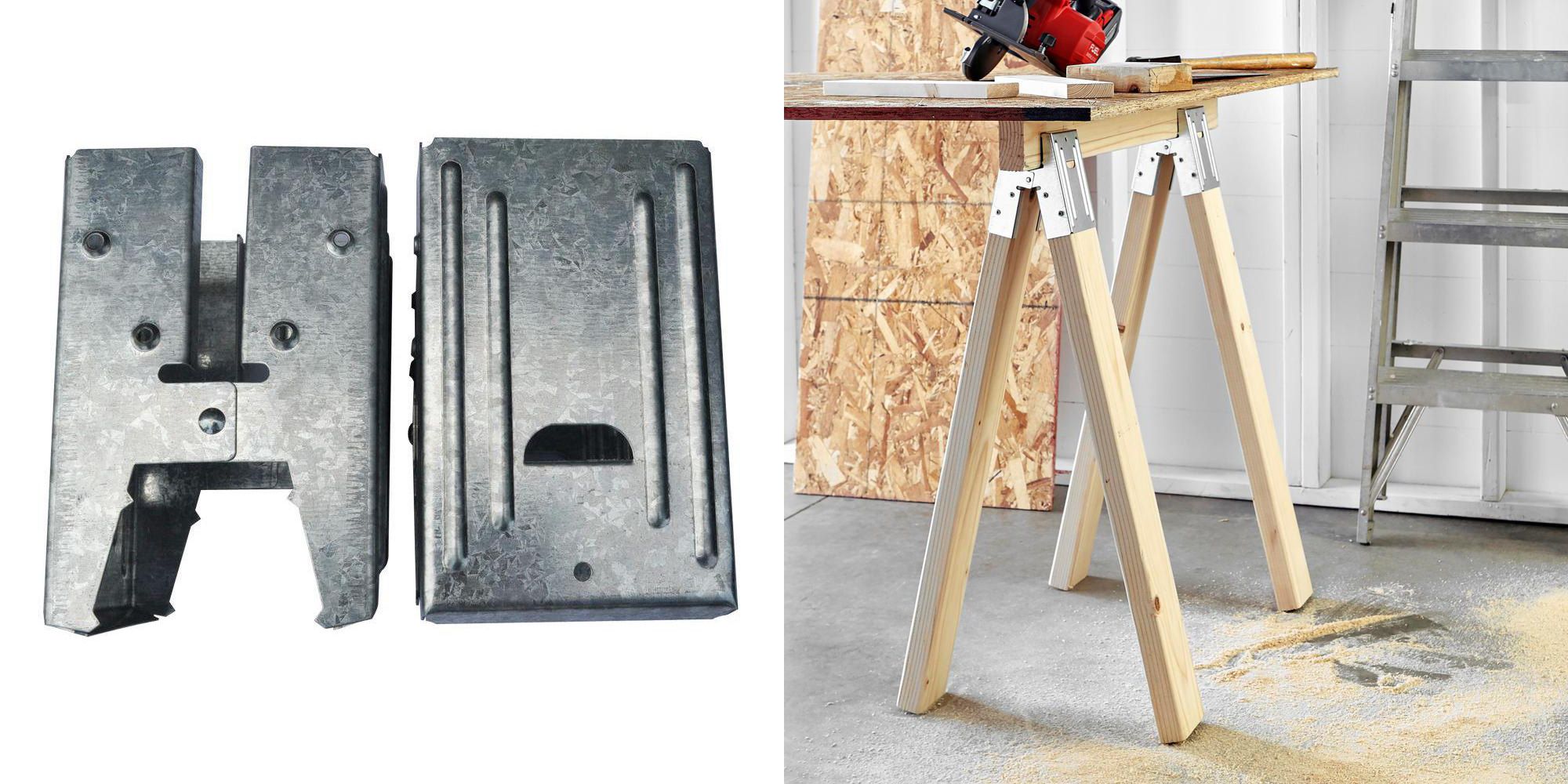
Using Sawhorse Brackets
For a quick and easy DIY option, consider using sawhorse brackets. These metal brackets allow you to create sawhorses using standard lumber. The process is simple:
- Purchase a set of sawhorse brackets.
- Cut 2×4 lumber to the desired length for legs and top beam.
- Insert the lumber into the brackets and secure it according to the manufacturer’s instructions.
Store-Bought Sawhorse Options
If you prefer the convenience of ready-made sawhorses or lack the time or skills to build your own, there are many excellent store-bought options available. Here’s an overview of the different types you can find in your local hardware store:
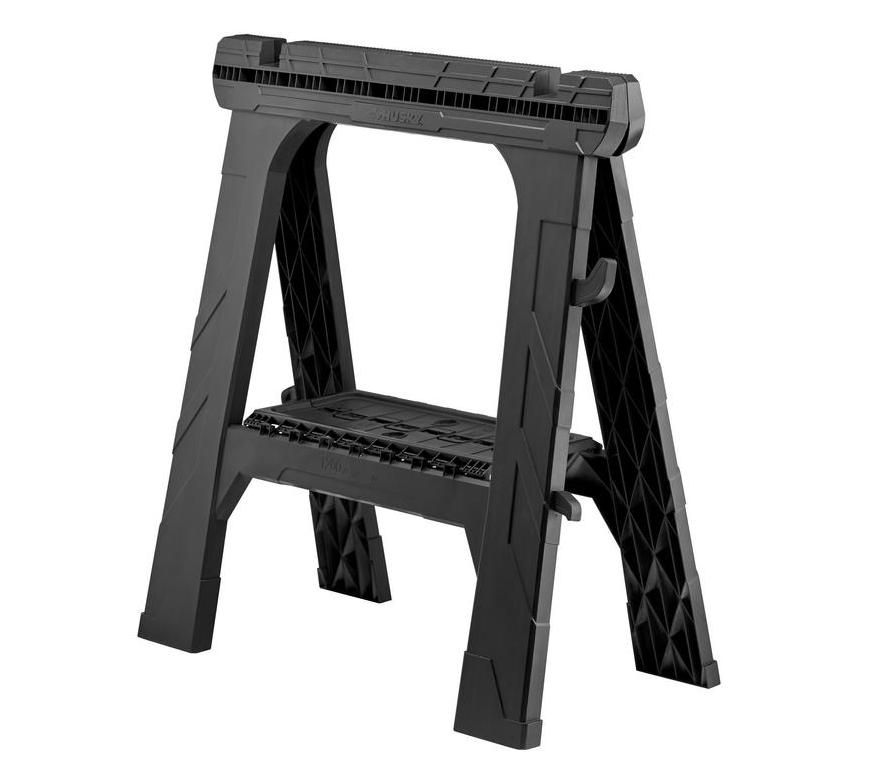
Light-Duty Sawhorses
Light-duty sawhorses are ideal for occasional use or lighter tasks such as painting or working with smaller materials. These sawhorses typically feature the following elements:
- Folding design for easy storage and transport
- Lightweight construction, often made of plastic or thin metal
- Weight capacity usually between 100-300 pounds per pair
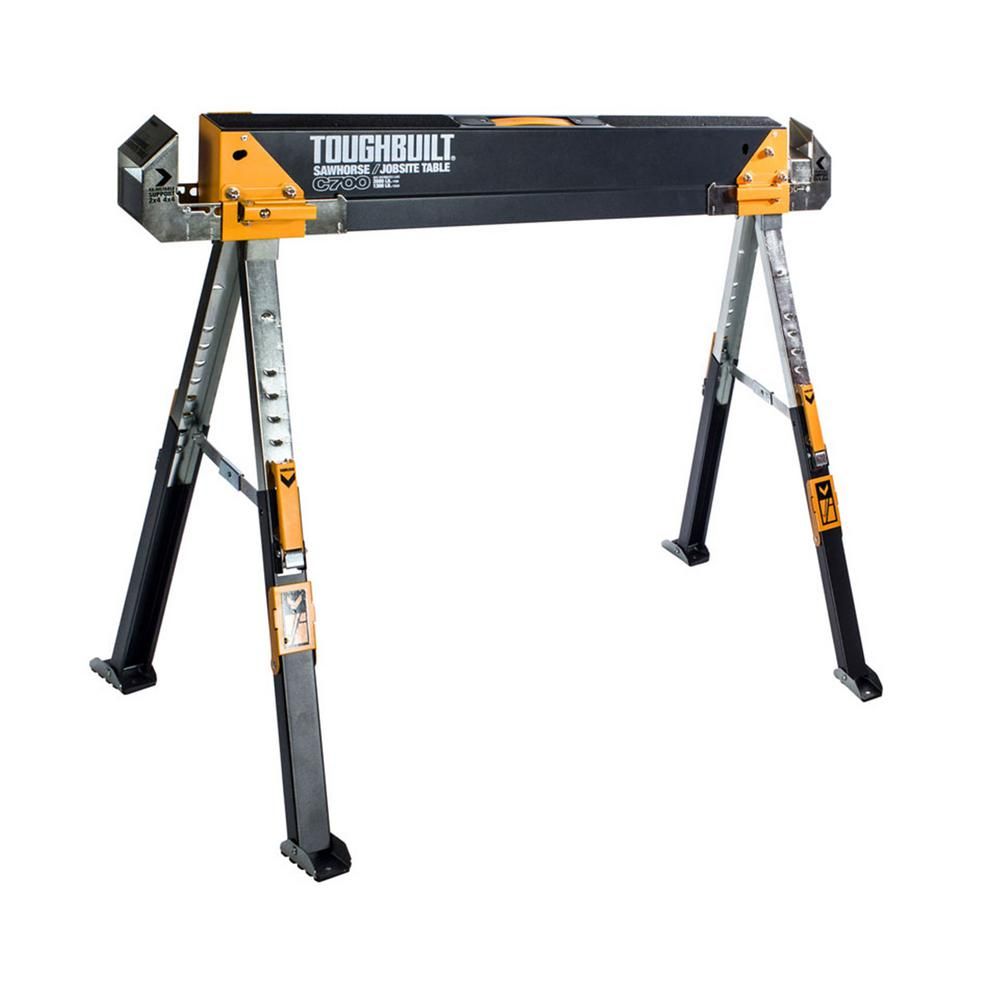
Heavy-Duty Sawhorses
Heavy-duty sawhorses offer increased stability and weight capacity for more demanding projects or professional use. These sawhorses often include the following features:
- Additional features like adjustable height or built-in tool storage
- Higher weight capacity, often 1000 pounds or more per pair
- Robust construction, typically made of thick metal or hardwood
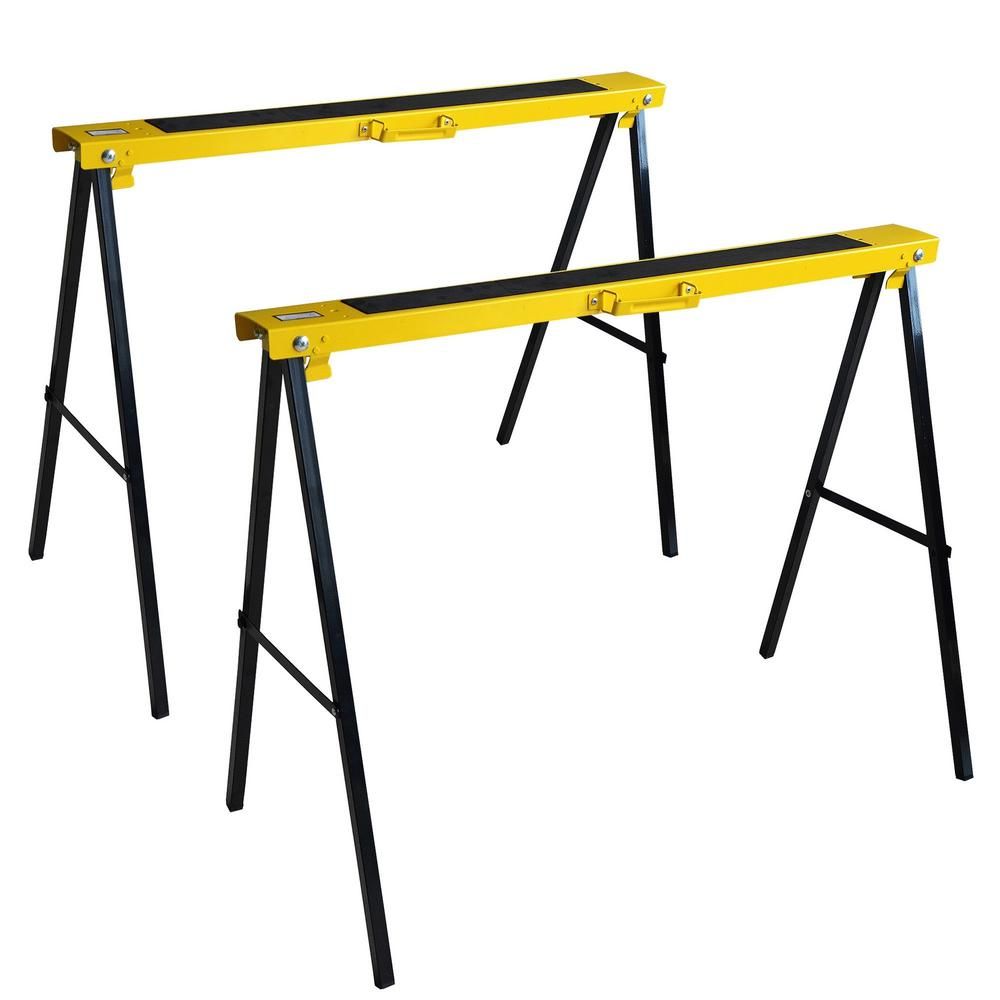
Adjustable and Multi-Functional Sawhorses
For maximum versatility, consider adjustable or multi-functional sawhorses. These types of sawhorses are ideal for users who work on various projects and need adaptable workspace solutions. While they may be more expensive than basic models, their versatility can make them a worthwhile investment for serious DIY enthusiasts or professionals. These models offer the following features:
- Built-in clamping systems or ruler markings for added functionality
- Convertible designs that can function as workbenches or material supports
- Height adjustment to accommodate different tasks and user heights
How To Properly Use Sawhorses
Knowing how to set up and use sawhorses correctly matters for both safety and efficiency in your projects. Here are some key points to keep in mind:
Setting Up Your Sawhorses
Proper setup is essential for the stable and safe use of sawhorses. Follow these steps:
- Choose a level surface to place your sawhorses.
- Ensure the legs are fully extended and locked in place (for folding models).
- Space the sawhorses at an appropriate distance for your workpiece.
- Check that the sawhorses are parallel to each other.
- For added stability, consider using a piece of plywood across the top of the sawhorses to create a temporary workbench.
Safety Precautions
Safety should always be your top priority when using sawhorses. Keep these precautions in mind:
- Be cautious of pinch points when setting up or folding sawhorses.
- Keep your work area clean and free of tripping hazards.
- Make sure your workpiece is balanced and doesn’t extend too far beyond the sawhorses.
- Never exceed the weight capacity of your sawhorses.
- Wear appropriate safety gear, including eye protection and work gloves.
Common Tasks and Techniques
Sawhorses can be used for a wide variety of tasks. Remember to adjust your setup based on the specific task at hand and always prioritize safety. Here are some common applications and tips:
- Creating a temporary workbench: Place a sheet of plywood across the sawhorses to create a large work surface.
- Cutting lumber: Place the board across the sawhorses, ensuring the cut line is between them. Use a circular saw or handsaw to make your cuts.
- Painting doors or trim: Lay doors across the sawhorses for easy access to both sides. Use painter’s pyramids to elevate the workpiece slightly.
- Supporting long materials: Use sawhorses as outfeed supports when working with long boards on a table saw.
Maintaining Your Sawhorses
Proper maintenance can significantly extend the life of your sawhorses and keep them safe and functional for years to come. Here are some tips for keeping your sawhorses in top condition:
Cleaning and Storage
Regular cleaning and proper storage are key to maintaining your sawhorses:
- After each use, wipe down your sawhorses to remove dust, sawdust, or any other debris.
- For folding sawhorses, dry them completely before folding to prevent mold or mildew growth.
- For wooden sawhorses, periodically check for and sand down any splinters.
- If storing outdoors, consider using a waterproof cover to protect them from the elements.
- Store your sawhorses in a dry place to prevent rust (for metal sawhorses) or rot (for wooden ones).
Repairs and Replacements
Even with proper care, sawhorses may need occasional repairs or part replacements.
- For metal sawhorses, address any signs of rust immediately by sanding and applying rust-resistant paint.
- For wooden sawhorses, tighten any loose screws or bolts regularly.
- If a leg becomes wobbly on a wooden sawhorse, reinforce it with additional bracing or consider replacing the entire leg.
- If the damage is extensive or affects the structural integrity of the sawhorse, it’s safer to replace the entire unit rather than attempt major repairs.
- Replace any damaged or worn parts promptly to maintain stability and safety.
Our Conclusion
Sawhorses are a great tool for any DIY enthusiast or professional, providing support for various projects. Whether you buy or build your sawhorses depends on your specific needs, skills, and available time. DIY options allow for customization and can be cost-effective, while store-bought models offer convenience and often include additional features.
Regardless of your choice, prioritize safety, durability, and functionality when selecting or building your sawhorses. With proper use and maintenance, a good set of sawhorses can serve you well for many years, supporting your creative endeavors and helping you tackle projects of all sizes. Remember, the best sawhorses are the ones that meet your unique needs and help you work efficiently and safely.

